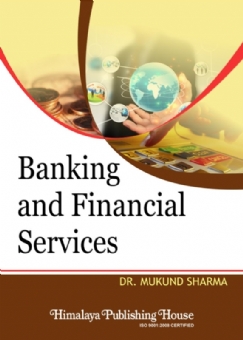Modern business involves large-scale decision-making activities, which comprise mathematical techniques as effective tools to solve practical business problems. Therefore, the subject, Business Mathematics became more popular, and hence every student of commerce and management should study business mathematics. This book “An Introduction to Business Mathematics” is an introductory textbook on business mathematics, which covers almost all the topics of modern business mathematics in a comprehensive manner.
Contents –
1. NUMBER SYSTEM
Natural Numbers
Integers
Rational Numbers
Irrational Numbers
Real Numbers
Imaginary Numbers
Complex Numbers
Prime Number
Properties of Real Numbers
Fraction
Least Common Multiple
Highest Common Factor
2. THEORY OF INDICES
Laws of Indices
Simple Operations
Decimals
Removal of Brackets
3. LOGARITHMS
Definition
Forms of Logarithm
Characteristics of Logarithm
Types of Logarithm
Antilogarithm
Rules of Logarithm
4. ANALYTICAL GEOMETRY
Introduction
The Distant Formula
Inclination of a Straight Line
Slope of a Straight Line
Intercepts
Different Forms of Equation of a Straight Line
Perpendicular Straight Lines
Parallel Straight Lines
5. EQUATIONS
Meaning
Types of Equation
Linear Equation
Quadratic Equation
Cubic Equation
Quartic Equation
Simultaneous Equation
Solving the Equations
6. PERMUTATIONS AND COMBINATIONS
Factorial Notation
Fundamental Principle
Permutations
Circular Permutations
Combinations
7. BINOMIAL THEOREM
Binomial Expression
Binomial Theorem for any Positive Integral Index ‘n’
Middle Term in Expansion
Binomial Theorem for any Index
8. PROGRESSIONS
Sequence and Series
Arithmetic Progression
Geometric Progression
Harmonic Progression
Application in Business
Population Growth
9. SET THEORY
Introduction
Meaning
Definition
Notation
Representation of a Set
Forms of Set
Set Operations
Venn Diagrams
Application in Business
10. DIFFERENTIAL CALCULUS
Constant
Variable
Functions
Limit and Continuity
Differential Calculus
Meaning of Differentiation
Rules of Differentiation
Partial Differentiation
Total Differentiation
Maxima and Minima
Applications in Business
Consumer Behaviour
Lagrange’s Method of Consumer’s Equilibrium
Cost Functions
Revenue Functions
Mathematical Relationship between TR, AR, MR and
Elasticity of Demand
Firm’s Behaviour
Homogeneous Function
Cobb-Douglas Production Function
Euler’s Theorem
11. INTEGRAL CALCULUS
Meaning
Some Basic Rules of Integration
Definite Integration
Area between Two Curves
Applications in Business
Cost Functions
Revenue Functions
Consumer’s Surplus
Producer’s Surplus
12. MATRICES
Meaning
Notations
Basic Concepts
Types of Matrix
Algebra of Matrices
Transpose of a Matrix
Determinant
Rank of a Matrix
Minor
Cofactor
Adjoint of the Matrix
Inverse of a Square Matrix
Solving a System of Linear Equations
Matrix Inversion Technique
Cramer’s Rule
Testing Consistency Linear Equations
Application in Business
Input-Output Analysis
13. RATIO AND PROPORTION
Ratio
Meaning
Types of Ratio
Proportion
Meaning
Rules of Proportion
Types of Proportion
14. COMMERCIAL ARITHMETIC
Meaning
Simple Interest
Compound Interest
Nominal Rate of Interest and Effective Rate of Interest
Depreciation
Annuity
Discount
15. LINEAR PROGRAMMING
Introduction
Meaning
Basic Concepts
Mathematical Formulation of L.P.P.
Graphical Method
Simplex Method






